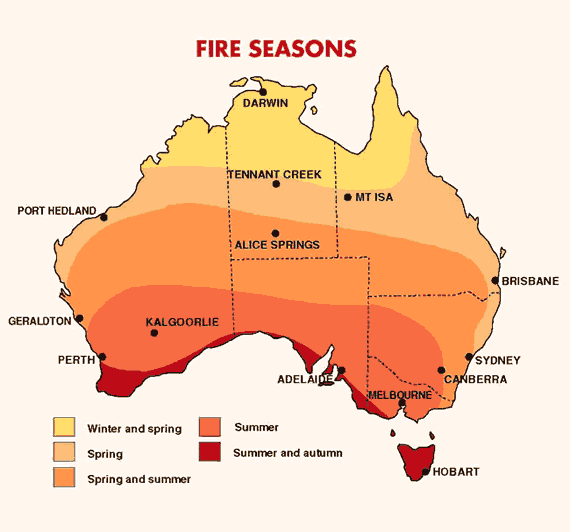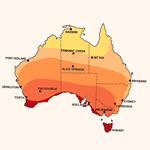Australia's bushfire seasons
02 April 2013
Very little of our continent is free from fires. Dry spells create a high fire risk, particularly after good rain has encouraged lush growth. Even arid regions experience scrub fires in years when good wet season rains are followed by a long dry spell.
Weather systems work differently across Australia's temperate and tropical regions. Severe bushfire conditions are influenced by a combination of these systems, but in most cases by hot, dry winds blowing from central Australia. The dry summer months are the danger time for southern Australia, while northern Australia is at risk during winter.
Southeast Australia—summer and autumn
As grass and forests dry during summer and autumn, southeast Australia becomes vulnerable to the threat of bushfire. During late spring and early summer grass and forest fuels hold some moisture but fires can occur on hot days with strong winds. Fuels dry out in mid and late summer but winds are typically not as strong. Early autumn sees a transition to cooler conditions and generally lighter winds.
New South Wales and southern Queensland—spring to mid-summer
The greatest danger occurs after the dry winter and spring. The worst conditions occur when deep low-pressure systems near Tasmania bring strong, hot and dry, westerly winds to the coastal districts. The end of the fire season is determined by the onset of moister conditions, sometimes the result of a tropical cyclone developing near the Queensland coast.
Northwest Western Australia and the Northern Territory—winter and spring
In the warm, dry and sunny winter and spring, when grasses are dead and fuels have dried, northern Australia becomes most susceptible to bushfires. Intense high-pressure systems over South Australia producing strong southeast to northeast winds increase the risk of bushfires.
Southern Western Australia—spring and summer
The greatest danger is between late spring and early autumn when fuels have dried after the winter rains. Heat troughs intensifying near the Pilbara, with surges of hot air from the interior produce dangerous fire weather conditions.

Australia's bushfire seasons.
Read more

Subscribe to this blog to receive an email alert when new articles are published.


Comment. Tell us what you think of this article.
Share. Tell others.